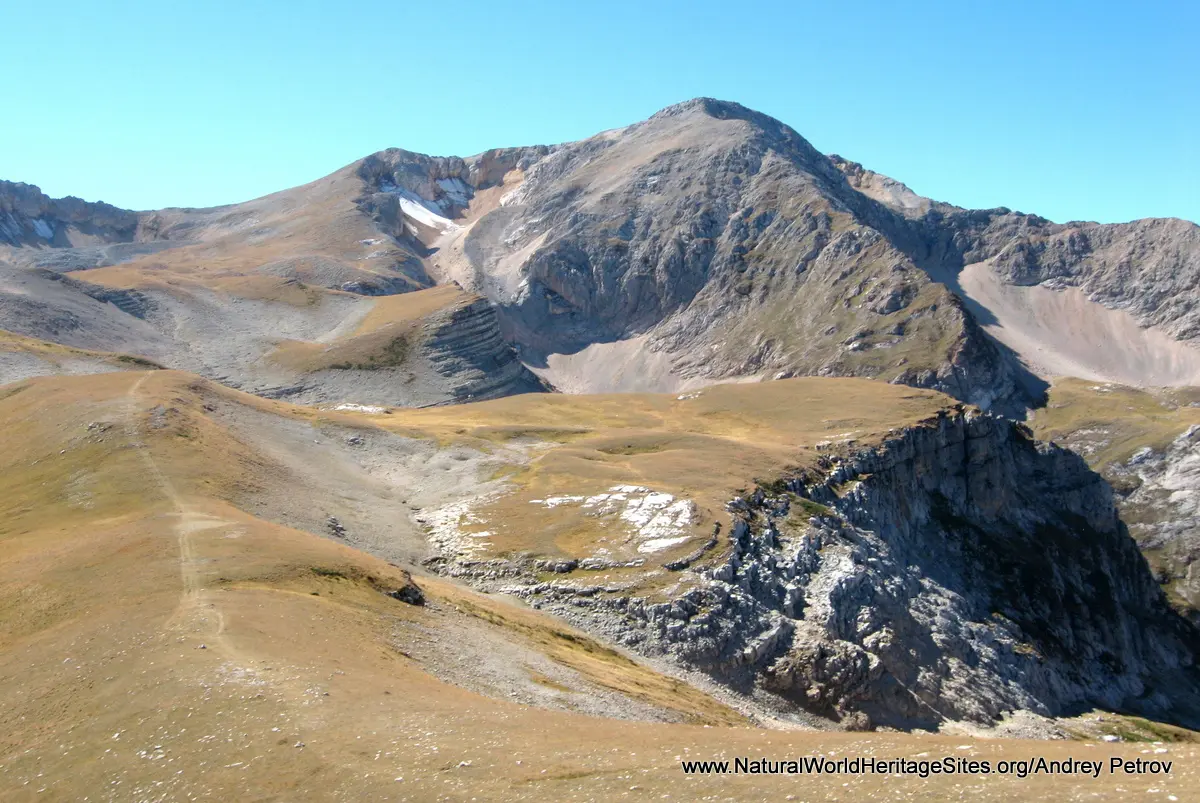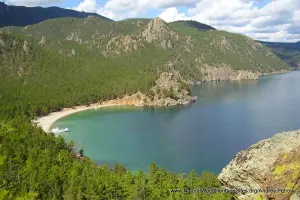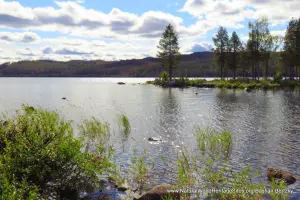EXPLORE Western Caucasus with this slideshow, check the location map and get all the facts and information below.
For slideshow description see right or scroll down (mobile). Click to view slideshow
Location and Values: The Western Caucasus World Heritage Site is located at the western end of the Caucasus Mountains, about 50 km north-east of the Black Sea resort of Sochi. It includes a great diversity of ecosystems, ranging in altitude from around 250m to 3,360m, and is one of the few large mountain areas of Europe that remains in a relatively pristine state. Much of the landscape is shaped by glacial action, with high peaks, remnant glaciers, moraines and numerous high-altitude lakes. The site is listed for its biodiversity values, and its diverse vegetation types exhibit clear zonation with altitude and across the site from west to east. The deciduous forests of lower elevations (to 1,200m) give way to a belt of mixed beech-fir forest, with coniferous forest and birch dominating the higher elevations below the tree-line. The higher parts of the mountains have sub-alpine shrub-lands, with alpine meadows below the rocky mountain peaks and snow-covered summits. Importantly, the North Caucasus is the only place in the world where warm-temperate forests have existed since the Tertiary Period making it the most important refuge for ‘relict’ species in West Eurasia. Furthermore, the Caucasus as a whole is isolated from other mountains, so evolutionary processes have resulted in high levels of endemism.
A total of 1,580 vascular plants have been recorded, of which about 10% are listed as endangered. About a third of the 967 plant species in the high mountain zone are endemic to the Caucasus. The fauna includes 81 mammal species and 246 birds. These include re-introduced European bison (with some hybrid elements from the mountain sub-species which lived here before it was hunted to extinction); endangered species such as European mink and western tur; as well as local subspecies of wolf, chamois and red deer.
Conservation Status and Prospects. According to IUCN’s Conservation Outlook Assessment (2017) the conservation status of the Western Caucasus is of ‘significant concern’. The IUCN report notes that, while the site has been relatively well-protected in the past due to difficult access, new roads and infrastructure development have now made it much more accessible. Recent plans for large-scale tourism infrastructure development and skiing resorts, particularly on the biologically-important Lagonaki Plateau (as well as Mount Fisht and Oshten) represent a serious threat to the site. The IUCN report raises concern that improved access for tourism may lead to further long-term degradation with increased logging, poaching and uncontrolled visitation causing disturbance, littering and fires. Increased logging (including illegal and nominally legal “sanitary” logging) has been identified as a particular threat, especially in the Adygean part of the site.
Links:
Google Earth
Official UNESCO Site Details
IUCN Conservation Outlook
UNEP-WCMC Site Description
Birdlife IBA
Slideshow description
The slideshow ‘tells the story’ of the Western Caucasus with a portfolio of photos by Andrey Petrov. Most of the images are from a visit onto the high-altitude alpine pastures in September 2012, with others showing the mountains with a covering of winter snow.
Factfile
Website Category: Mountains; Temperate & Boreal Forests
Area: 2,989 km2
Inscribed: 1999
Criteria:
- Ecological processes (ix);
- Natural habitat for biodiversity (x);
- Significant number of rare, endemic and/or endangered species (x)





